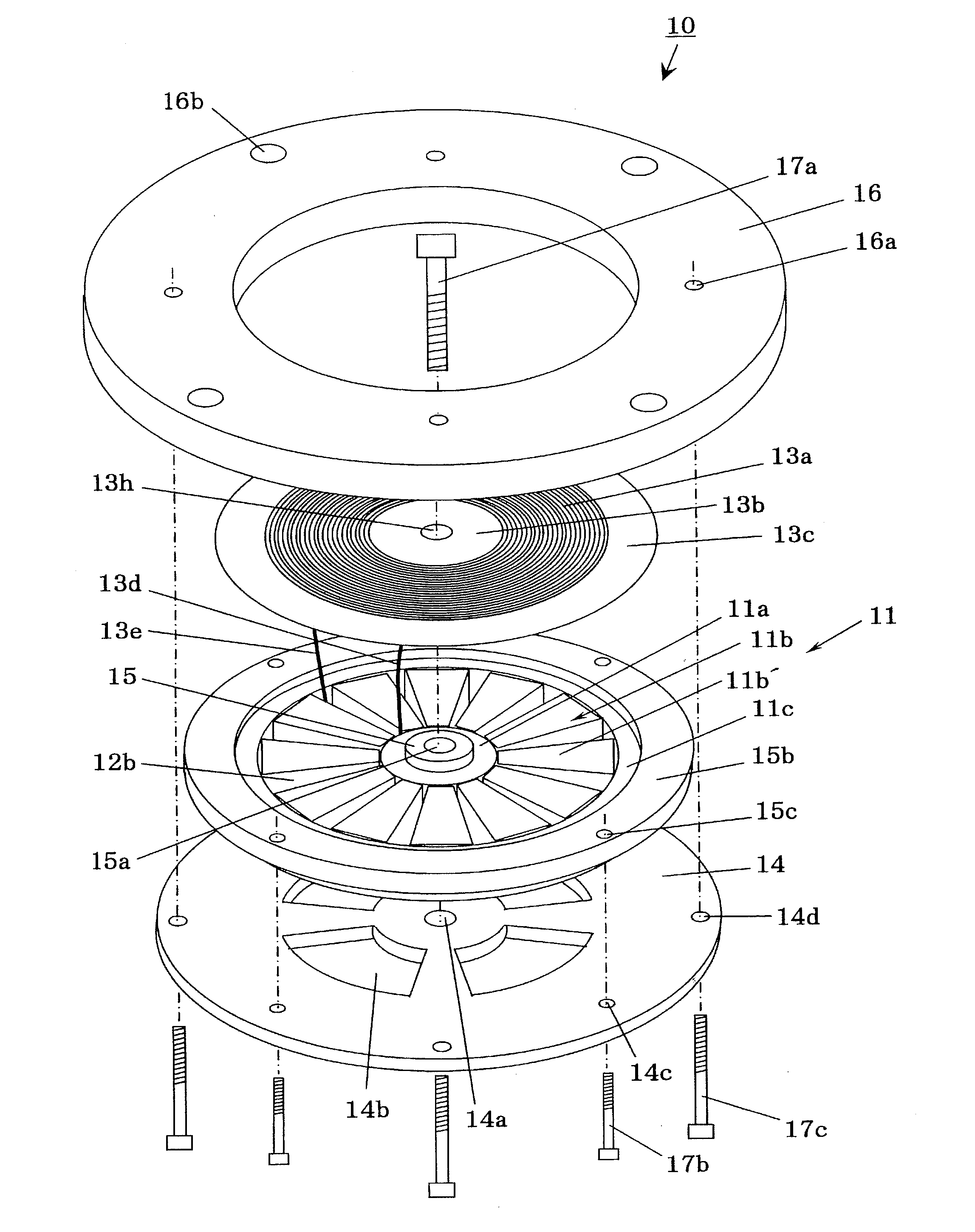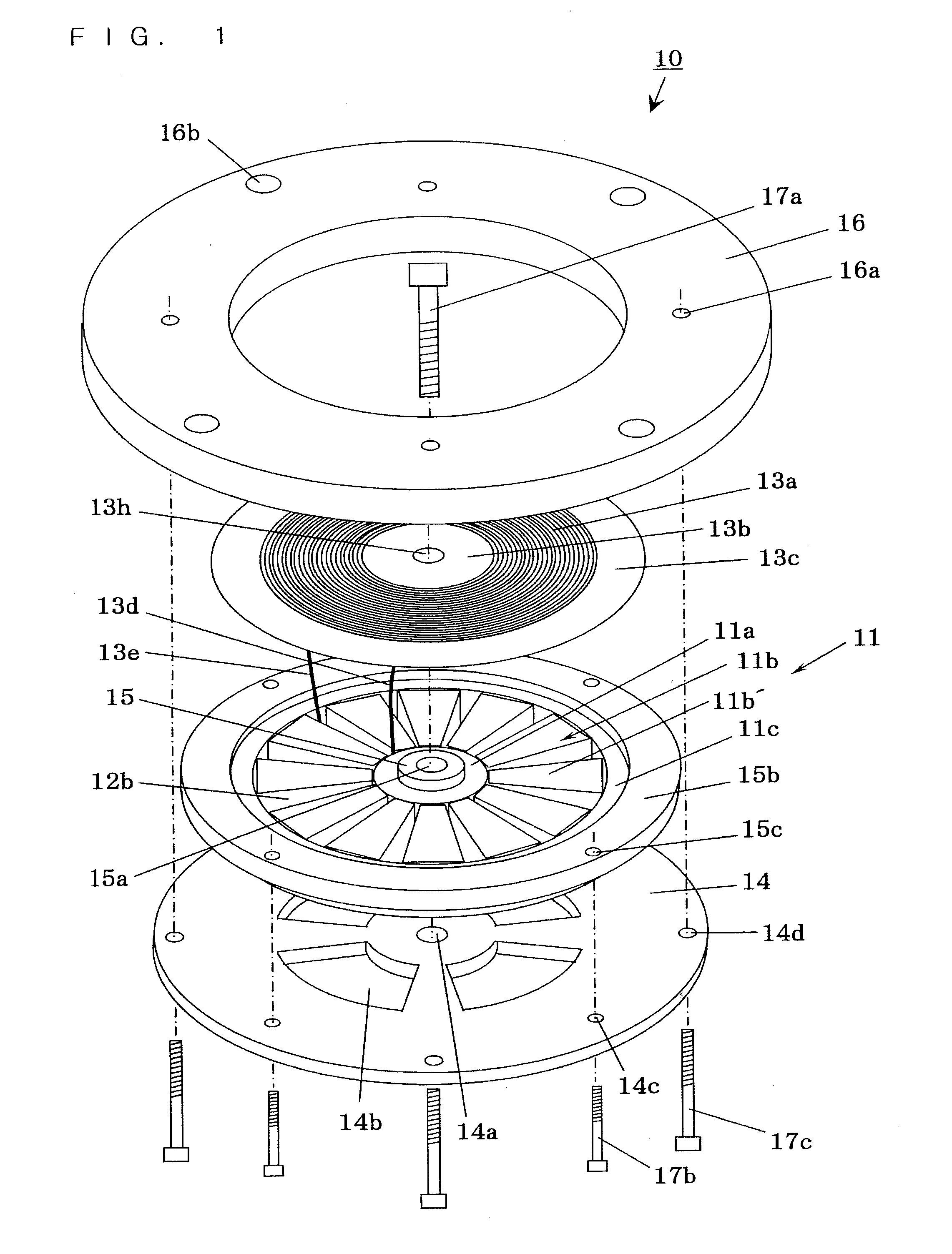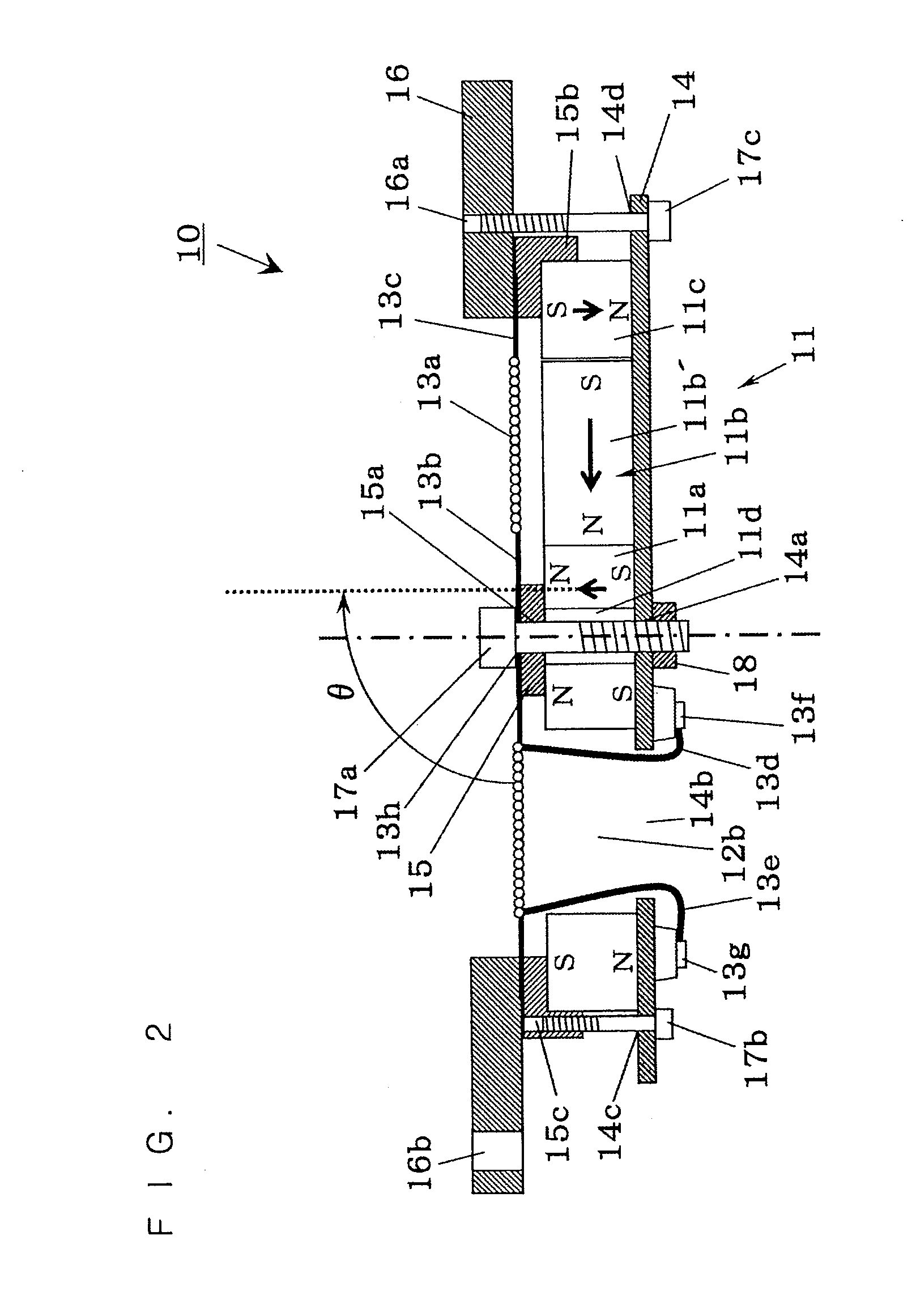Electroacoustic transducer
a transducer and electroacoustic technology, applied in the direction of transducer details, electrical transducers, plane diaphragms, etc., to achieve the effect of increasing the magnetic flux density for effective action, and reducing the volume of magnets used
- Summary
- Abstract
- Description
- Claims
- Application Information
AI Technical Summary
Benefits of technology
Problems solved by technology
Method used
Image
Examples
embodiment 1
[0153]FIG. 1 is a disassembled perspective view showing an electroacoustic transducer according to Embodiment 1. FIG. 2 is a schematically sectional end view showing the major parts of the electroacoustic transducer according to Embodiment 1.
[0154]In FIG. 1 and FIG. 2, reference numeral 10 denotes an electroacoustic transducer according to Embodiment 1, 11 denotes a magnet plate of the electroacoustic transducer 10 the entirety of which is composed to be roughly disk-shaped, 11a denotes a center area magnet using a ring-shaped neodymium magnet at partial areas of the magnet plate 11, 11b denotes a base area magnet composed of twelve trapezoidal small magnets 11b′ using neodymium magnet at partial areas of the magnet plate 11, 11c denotes an outer circumference area magnet using a ring-shaped neodymium magnet at partial areas of the magnet plate 11, and 11d denotes an insertion hole of a bolt 17a secured at the middle of the center area magnet 11a. Reference numeral 12b denotes twelv...
embodiment 2
[0185]FIG. 3 is a schematically sectional end view showing the major parts of an electroacoustic transducer according to Embodiment 2.
[0186]In FIG. 3, reference numeral 20 denotes an electroacoustic transducer according to Embodiment 2, 21 denotes a magnet plate of the electroacoustic transducer 20 the entirety of which is composed to be disk-shaped, 21a denotes a center area magnet using a ring-shaped neodymium magnet at partial areas of the magnet plate 21, 21b denotes a base area magnet composed of a plurality of trapezoidal small magnets 21b′ using a neodymium magnet at partial areas of the magnet plate 21, 21d denotes a front center area magnet having a semispherical forward portion, which is installed at the front center part of an acoustic diaphragm 23a, is formed to be ring-shaped, and uses a neodymium magnet, and 21e denotes a front outer circumference area magnet that is installed at the front outer circumference portion of the acoustic diaphragm 23a and uses a ring-shaped...
embodiment 3
[0215]FIG. 4 is a schematically sectional end view showing the major parts of an electroacoustic transducer according to Embodiment 3.
[0216]In FIG. 4, reference numeral 30 denotes a composite-type electroacoustic transducer according to Embodiment 3, which is composed by concentrically disposing a high-range electroacoustic transducer 40 and a low-range electroacoustic transducer 50 each of which is independently formed. Reference numeral 41 denotes a magnet plate of a high-range electroacoustic transducer 40, the entirety of which is composed to be disk-shaped, 41a denotes a high-range center area magnet using a ring-shaped neodymium magnet at a partial area of the high-range magnet plate 41, and 41b denotes a high-range base area magnet composed of a plurality of trapezoidal small magnets 41b′ each using a neodymium magnet at a partial area of the high-range magnet plate 41. Reference numeral 42b denotes a high-range sound passage port formed between the trapezoidal small magnets ...
PUM
 Login to View More
Login to View More Abstract
Description
Claims
Application Information
 Login to View More
Login to View More - R&D
- Intellectual Property
- Life Sciences
- Materials
- Tech Scout
- Unparalleled Data Quality
- Higher Quality Content
- 60% Fewer Hallucinations
Browse by: Latest US Patents, China's latest patents, Technical Efficacy Thesaurus, Application Domain, Technology Topic, Popular Technical Reports.
© 2025 PatSnap. All rights reserved.Legal|Privacy policy|Modern Slavery Act Transparency Statement|Sitemap|About US| Contact US: help@patsnap.com



